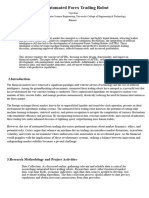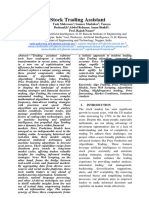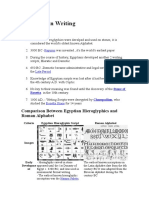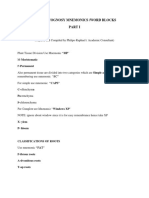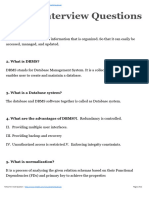Analysis of the TradingAgents Framework
This report provides a detailed analysis of the TauricResearch/TradingAgents project, a multi-agent Large
Language Model (LLM) framework for financial trading. The insights are derived from the project's public
GitHub repository.
1. Project Overview & Philosophy
The core philosophy of TradingAgents is to emulate the collaborative decision-making structure of a
real-world financial trading firm. Instead of relying on a single monolithic model, the framework
decomposes the complex task of trading into specialized, function-specific agents.
Stated Purpose:"TradingAgents is a multi-agent trading framework that mirrors the dynamics
of real-world trading firms. By deploying specialized LLM-powered agents... the platform
collaboratively evaluates market conditions and informs trading decisions."
Key Insights:
Research-Oriented: The framework is explicitly positioned as a tool for research, not as a source of
direct financial advice. This suggests a focus on exploring the capabilities of LLM-driven agents in
finance rather than on guaranteed profitability.
Division of Labor: The fundamental principle is that a team of specialists (analysts, researchers, risk
managers) produces a more robust and nuanced output than a single generalist agent.
Human-Centric Design: The architecture mimics human organizational structures, including roles,
reporting lines, and even debate, making its logic relatively interpretable.
2. System Architecture
The system is architected as a hierarchical multi-agent system where different teams of agents perform
distinct functions, culminating in a final trade decision. The workflow is designed for sequential analysis,
debate, and risk-assessed execution.
The agent teams are organized as follows:
| Team/Agent Role | Function & Responsibilities | | :--- | :--- | | Analyst Team | Responsible for initial data
gathering and generating specialized reports from different analytical perspectives. | | Fundamentals
Analyst | Evaluates corporate financials, performance metrics, and intrinsic value. | | Sentiment Analyst |
Gauges market mood by analyzing social media and public sentiment data. | | News Analyst | Monitors
and interprets macroeconomic indicators and global news events. | | Technical Analyst | Uses technical
indicators (e.g., MACD, RSI) to identify price patterns and forecast movements. | | Researcher Team |
Critically assesses the analyses from the Analyst Team. It is composed of two opposing roles to ensure a
balanced view. | | Bullish Researcher | Argues in favor of a positive outlook, focusing on potential gains. |
| Bearish Researcher | Argues against, focusing on potential risks and downsides. | | Trader Agent | The
primary decision-maker that synthesizes the reports and debate summaries from the Analyst and
Researcher teams to formulate a concrete trading proposal. | | Risk & Portfolio Mgmt. | The final
checkpoint responsible for risk assessment and order execution. | | Risk Management Team | Evaluates
the proposed trade against portfolio risk factors like volatility and liquidity, providing a final assessment. |
| Portfolio Manager | Holds ultimate authority to approve or reject the transaction proposal based on the
comprehensive reports. If approved, the order is executed. |
3. Technology Stack
�The project is built entirely in Python and leverages a modern stack centered around LLM orchestration
and financial data APIs.
| Category | Technology / Library | Purpose | | :--- | :--- | :--- | | Programming Language | Python (v3.13
specified) | Core language for the entire framework. | | Core Framework | LangGraph | Used to build the
multi-agent graph, enabling modularity and flexible agent interactions. | | LLMs (Primary) | o1-preview
(Deep Thinking) gpt-4o (Fast Thinking) | Mentioned as the models used for experiments, suggesting a
dual-model approach for complex vs. quick tasks. | | LLMs (Alternatives) | o4-mini, gpt-4.1-mini, gpt-4.1-
nano | Recommended for cost-effective testing and development due to the high volume of API calls. | |
Financial Data API | FinnHub API | Required for sourcing financial data. The free tier is noted as sufficient. |
| LLM Provider API | OpenAI API | Required for powering the reasoning capabilities of all agents. | |
Configuration | Python dictionary (default_config.py) | Provides a centralized and customizable way to
manage LLM selection, debate rounds, and tool usage. |
4. Core Concepts & Strategies
The framework's primary innovation lies in its process rather than a single, proprietary trading algorithm.
It uses LLMs to automate and scale qualitative and quantitative analysis through a structured, multi-
perspective approach.
LLM-Powered Reasoning: Instead of just numerical computation, agents use LLMs to interpret data,
generate analytical reports, and engage in debates in natural language. This allows the system to
process unstructured data like news and sentiment.
Dialectical Debate: The use of a "Researcher Team" with bullish and bearish agents introduces a
structured debate mechanism. This is designed to surface biases, challenge initial assumptions, and
produce a more balanced risk-reward analysis before a decision is made.
Strategy Synthesis: The framework does not enforce a single trading style. Instead, it synthesizes
insights from four distinct analytical methods:
1. Fundamental Analysis
2. Sentiment Analysis
3. News-Based (Macro) Analysis
4. Technical Analysis
Configurable Depth: The system's behavior can be modified via configuration, such as changing the
number of debate rounds (max_debate_rounds) or the LLMs used, allowing for a trade-off between cost,
speed, and analytical depth.
Example Python Usage:This code snippet demonstrates how to initialize and run the trading graph.
from tradingagents.graph.trading_graph import TradingAgentsGraphfrom tradingagents.default_config import DEFAULT_CONFIG# Initialize wi
5. Data Handling
The system is designed to operate with both real-time and historical data, which is critical for live trading
experimentation and backtesting.
Live Data Sources:
The framework uses the FinnHub API to source real-time financial data when the online_tools
configuration is enabled. This is intended for live analysis and experimentation.
Offline/Cached Data:
The project mentions a proprietary, curated dataset named Tauric TradingDB.
This dataset is used for backtesting when online_tools is disabled.
The documentation notes that this dataset is currently being refined and is planned for a future
release, indicating a commitment to providing reproducible research capabilities.























